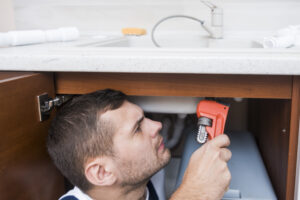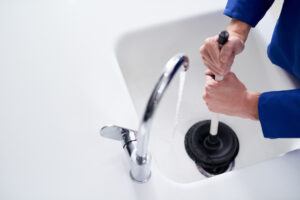Do you dread the day you need to call a licensed plumber for water heater repair or replacement? Unfortunately, that day will come. But you don’t need to sit idly by as you wait to experience trouble. Instead, you can be proactive and do some water heater maintenance. The following tips will keep your water heater in good shape.
1. Check the TPR Valve
The TPR valve is also known as the temperature pressure release valve. When the pressure in your hot water heater tank gets to be too high, this valve opens. It lets out water, which decreases the pressure inside the tank.
As you might expect, this valve is crucial. If it doesn’t work, you’re sure to experience problems. To test this valve, shut off the water and the cold water supply valve. Then, position a bucket underneath the pipe that attaches to the TPR valve. You can clearly see the pipe, and you don’t need to worry about confusing it for another pipe.
Lift the tab on the valve up, and water will flow out. Let the tab go, and water should stop flowing. If it continues to flow, your valve is no good. You’ll need to replace the valve, which requires some effort. You may want to consult with a
water heater repair and installation technician before doing the work on your own.
2. Look at the Anode Rod
An anode rod is a steel core wire that has aluminum, zinc, or magnesium wrapped around it. The rod is in place for protection; it protects the metal lining on the inside of your water heater tank. Essentially, the anode rod prevents corrosion or an explosion. So, this is one of the most important parts of the hot water heater to check.
To check the anode rod, attach a hose to the drain cock. Allow a few gallons of water to drain out. Using a 1 1/16 inch socket, unscrew the rod from the head. Typically, the head is on the top of the heater or under the top plate. If you’re unsure where to find the head, you can call your plumber.
Once you unscrew the rod, look at it closely. How much debris is on the rod? If there’s calcium surrounding the rod or the rod is under ½ inch thick, you need a new rod. Before replacing it, you need to wrap the new rod in Teflon tape. When there’s limited space, replacing the rod can be difficult. You might need a segmented rod.
3. Drain the Tank and Wash Out Sediment
Over time, your hot water heater accumulates debris. There’s sediment in the water, and that sediment ends up sitting in your tank. When too much sediment builds up, your hot water heater stops working.
Fortunately, you can get rid of the sediment. Drain all the water in your heater tank with a hose connected to the drain cock. To get the sediment off the bottom of the tank, open the cold water supply valve. The water will push up the sediment, and the sediment will drain out of your tank. Continue to do this until the water coming out of the hose is clear.
When you’re done, close the drain cock. Refill the tank with the cold water valve, and you can turn your water heater back on.
4. Change the Temperature
Do you know what temperature your hot water heater is set to? As part of your maintenance to avoid calling a water heater repair and installation company, you can change the temperature on your tank.
Look for the temperature dial on the side of the tank. Then, unscrew the cover on the dial. Using a flathead screwdriver, adjust the dial to 120 degrees. You save about 5% in energy costs for every 10 degrees you lower the dial. At a lower temperature, your heater won’t need to work as hard. This prevents your heater from breaking down.
If you plan on leaving your home for several days, you can turn your heater down even further. However, be wary of turning your heater down too low.
5. Insulate Your Pipes
In the winter, your hot water heater puts in overtime. To make life easier for your heater, consider using self-sticking
foam pipe insulation. Before you buy the tape, find out what diameter your pipes are.
Line the hot and cold water pipes with the foam tape. Peel the tape and make sure to squeeze the insulation closed. In the winter, the foam will insulate the pipes. And in the summer, the tape will prevent condensation.
6. Insulate Your Heater
Just as you insulate your pipes, you should insulate your water heater. To protect your heater from the cold, buy an insulating blanket. Cut it large enough to fit around your pipes, TPR valve, and temperature control. For the best results, wrap the side of the tank in the blanket. Then, seal up the cuts with foil tape.
If you have an oil or gas heater, don’t cover the top of the system. On an electric heater, you can cap the top with a large circle of insulation. Tape it down to the side of the tank.
7. Call an Expert
You can’t handle water heater maintenance on your own. If you really want your heater to last, you should call a professional. They can handle all of your maintenance needs. If you have any questions about things you can do to keep your heater in good shape, a professional can answer them. They can also tell you about the benefits of a
tankless water heater.
Working with a Licensed Plumber and Water Heater Repair Specialist
When you work with an expert for water heater maintenance, you reap many benefits. You can save money on your energy bills and increase the lifespan of your heater. Furthermore, you can prevent the need for repairs.
If you need a licensed plumber and water heater repair specialist, you can call us at
Infinity Plumbing. Our team is always ready to help with water heater maintenance and repair.





